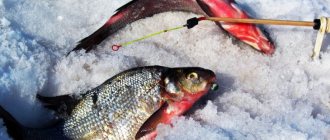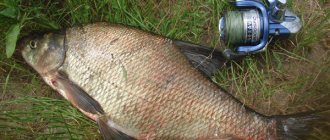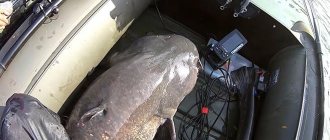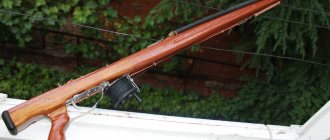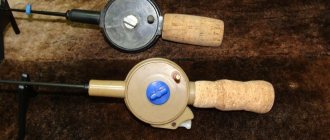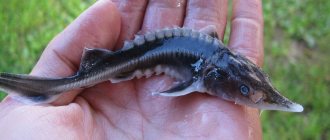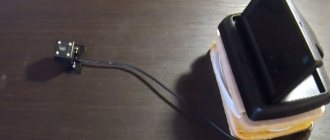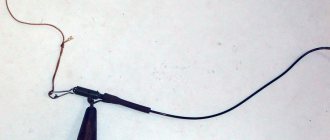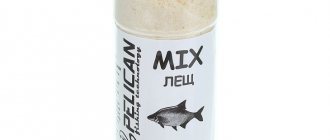Samolov hooks.
Self-catching hooks for fishing are still widely used today in Russia from the Caspian Sea to the Amur, but nevertheless, for most fishermen they have become a little-known tackle.

Job rating: 4
Number of reviews:
1
Number of posts:
1
Number of views:
8031
© 06/28/2012 Anatoly Shishkin Certificate of publication:
izba-2012-590229
I’ll try to find my entries, but I can’t promise that I’ll find them. Thanks for the tip! In fact, the links won't hurt me either. Anatoly. Here's what I found: Ioganzin B.G. ,, Hook fishing in the reservoirs of Siberia. 1948.” But it’s possible: Baranov F.I., Hook fishing tackle. 1936.” Both authors have many publications on fishing, but all in tiny brochures.
How to make a trap
The principle of operation of the trap is that the fish should freely fall into the trap, but it would not be able to swim out of it due to the design of the trap itself. Using such a clever design, you can catch most of the fish caught in the trap.
Nowadays, fishermen use a variety of improvised or unnecessary things for this purpose. Some fishermen weave traps from wicker, others use various nets stretched over a wire frame, and still others use plastic bottles as traps.
Fishing with sterlet bait
Maggots, dung worms, earthworms, small butterflies, and bloodworms are used as bait for catching sterlet;
Placing medium or large worms should be done by piercing them in several places, which ensures good retention of the bait on the hook;
Used as bait and fish fry. But then you should be prepared to meet other species of fish (pike, perch, pike perch) as a trophy;
Experienced fishermen often use a combination bait. Animal bait is combined with plant bait and thrown closer to the bottom;
The fish can mistake hard bait for a stone and simply spit it out, so its use is not advisable.
Baits and lures for fishing
When choosing bait for fish, you should give preference to the following types:
- you need to use large worms; when baiting, the bait is pierced in several places, this will allow the bait to be firmly fixed;
- bloodworm;
- butterflies;
- insect larvae;
- maggot;
- fry;
- combined baits with a pungent odor.
Let's celebrate! Many anglers also catch fish using chicken giblets and pieces of fish. When choosing bait for catching sterlet, you should remember that the fish bites on bait of animal origin.
A simple plastic bottle trap
A person’s living space is literally crammed with plastic bottles of various shapes and capacities. From such bottles you can very easily build a simple but effective fish trap.
If you need to catch small live bait, then a bottle with a capacity of 1.5-2 liters is suitable for this. If you need to catch larger sizes, you should take a 5-liter bottle.
To make such a trap, you will need a tool and several items such as wire, fishing line and rope.
- to begin with, remove the paper label from the bottle and wash it thoroughly so that there are no foreign odors in the bottle. Water or vegetable oil bottles are best used for this purpose. You don’t have to wash the vegetable oil bottle: it will attract fish with its smell anyway;
- then, you should cut off the neck of the bottle, about a third of the body (depending on the size of the fish) and insert the neck inside the bottle;
- after which, the inserted part of the bottle is fixed in place with a wire. You can fix it in no more than 4 places, so that later you can remove the neck to remove the fish from the bottle.
- in the bottle itself, you should make a lot of holes of small diameter so that the bottle can quickly submerge in water, especially since with holes it will not resist the water so much if the trap is supposed to be installed in the current;
- After the trap is ready, bait is placed inside it, and a rope and weight are tied to the trap. The weight can be placed inside the trap so that there are no snags. The trap is ready for use;
- The trap is thrown with the neck against the current. If fishing is done in calm water, then it can be cast and installed in any position, and the rope can be secured on the shore.
Techniques and tactics for catching sterlet
When catching one individual, you should re-cast the rod, since the fish rarely moves alone. For more effective results, it is recommended to throw several tackles at the same time.
The most optimal time is considered to be earlier in the morning or at night; it is at this time of day that the fish lead a more active lifestyle. When choosing a fishing spot, you need to throw one rod at the beginning of the hole in the reservoir, the second rod is closer to the center, and the third is placed at the exit from the hole.
It is recommended to avoid the presence of snags and large accumulations of algae. The rod must be properly secured to the shore.
Important to remember! Sterlet is an endangered fish species. Therefore, to carry out the fishing procedure, it is necessary to purchase an appropriate license, which specifies the fishing rules and the permissible quantity.
How to catch sterlet
Due to the danger of a sharp decline in the sterlet population, it is listed in the Red Book. Therefore, in many regions, catching this fish is completely prohibited. In Russia, in order to streamline the fishing of this valuable species, the fishing of sterlet was allowed under a special license.
Therefore, before you start fishing for sterlet, you need to thoroughly study the fishing rules. Of course, in different regions of Siberia these rules may have some differences, but they are minor.
Fishing license
- License validity period – 2 days;
- Fishing hours are from 6 a.m. to 11 p.m. Night time is excluded;
- It is allowed to catch up to 10 specimens of this valuable fish during the license period;
- It is prohibited to catch individuals less than 31 cm in length and weighing less than 250 grams.
In the special column of the license “Date” the days of the planned fishing are indicated, and in the column “Fishing time” the planned time.
License price
- A one-time ticket, which is issued for 2 days, allows you to catch 10 specimens and costs 462 rubles;
- A monthly allowance issued for 100 fish costs 4,620 rubles.
Licensed fishing gear
- One smooth bottom net with a mesh size of at least 40 mm and a length of up to 25 meters;
- Two fixed nets with a mesh of more than 40 mm. And up to 25 meters long;
- Two muzzles with a distance between veins of at least 40 millimeters;
- Five donks on 5 hooks.
The “fishing gear” column of the license indicates one proposed fishing gear permitted for this region.
Mesh box trap
The frame for the box can be made from any available material: wood, water pipes (plastic or aluminum), aluminum corners, etc.
- A mesh made of any material is stretched over the frame; the cell size is within 1 cm. You can use a metal mesh;
- two funnels are formed from the same mesh;
- Such funnels are installed and fixed from both sides of the box. Funnels should be installed with the narrow end inside the box;
- In the trap, you can place some kind of bait, depending on the type of fish that can be caught.
After this, the trap can be immersed in a pond. If the trap is metal, then you will not have to submerge it, but if it is wooden, then you will have to tie a good weight so that it sinks to the bottom of the reservoir.
Tackle for catching sterlet
One of the most important conditions for successful fishing is the ability to identify promising fishing spots. Determining a catchable place is not easy, especially since fishermen try to keep their secluded places secret.
The catchability of a place directly depends on the water level in the river and weather conditions. Basically, fish can be located in deep holes.
But even if the angler knows the location of the deep areas, he will have to work hard to find the exit point from the hole. The area opposite the exit from the pit will be the place of the most promising fishing, because fish regularly leave the depths and move to shallow water.
In spring and summer, sterlet can be located at different distances from the shore, depending on the water level in the river. If the river is full-flowing, then the fish can come quite close to the shoreline in search of various food. At this time, fishing is very promising even with an ordinary float rod.
When the water level decreases, the sterlet settles at depth. Periodically, it leaves its shelters to search for food, but does not come close to the shore. A decrease in the water level in a reservoir alarms any fish, which leads to a decrease in its activity.
With the onset of autumn, sterlet practically does not leave the deep places of the reservoir. Only in warm weather can it be occasionally caught in the coastal area.
In search of food, the sterlet likes to explore areas where the river flow borders on standing water. It is in such places that a large number of insects, their larvae and various worms settle.
Sterlet is a schooling fish, so having caught one individual, you can count on a series of bites. You just need to very quickly return the bait to its original fishing spot before it leaves this area.
With the onset of winter, the sterlet goes to a depth of 25 meters and stops actively pecking. Leads a passive lifestyle and eats little. Therefore, catching sterlet in winter is an unproductive activity and, even if you are lucky, this is rather an exception to the rule.
This fish can be caught all day long. But the best bite is observed in the dark. In this regard, in many areas a ban on catching sterlet at night has been introduced.
Tackle for sterlet

Each fisherman prepares the necessary equipment for fishing. This is how sterlet fishing is done. It is necessary to take a responsible approach to the choice of fishing equipment that will not let you down at the last moment and will make fishing interesting.
Rod
The choice of fishing rod depends on the season in which the fish is fished.
The following types of gear can be used:
- Donka with rubber bands. This rod is used in early spring. The result is achieved thanks to a large number of wiring. Also, donka does not scare off the inhabitants of the reservoir;
- float rod - fishing with a rod is carried out from early spring to autumn. Sterlet is a calm type of fish, so no special maneuvering is required to fish for a trophy;
- spinning rod is used after the onset of cold weather, when the water level drops and the fish go to greater depths.
Note! The rod should be long and strong, which can withstand heavy loads.
Line and leash
Sterlet is not a shy species, so different colors of tackle can be used. A fishing line with a thickness of 0.30 mm is considered suitable.
It is recommended to use a leash up to 40 mm long, but not less than 20 mm. Both removable and permanent tackle can be used. The leash should be thinner than the fishing line - this will allow the tackle not to get tangled.
Coil
To catch sterlet, it is necessary to use reels that allow long casts.
The most optimal are inertial reels, which can be used for all types of fishing rods. Also, this type of reel will prevent possible snags and allow you to cast bait with high accuracy.
Hook
When choosing, preference is given to numbers 5-7, and the hook should also be sharp. It is necessary to install no more than 5 hooks on the bottom; for other types of fishing rods, one hook is used.
Cargo
Most often, fishing is carried out in large currents, so it is necessary to use a heavy load. The most optimal would be a flat-shaped sinker weighing from 50 to 80 grams.
Using more sinker weight can lead to spooking of fish, as well as obstacles if there are foreign objects on the bottom.
Samolov for sterlet
Such a device is a flat-shaped weight that has a wire for connecting a leash and a soldered ring for attaching a fishing line. This kind of tackle is made with your own hands from lead.
The main leash of the samolov has a length of about 150 cm. And short leashes with a length of 10 cm are fixed on the main fishing line. Hooks made of wrought iron or wire are attached to them.
Self-catchers are installed against the current mainly in winter or autumn, in deep places in the reservoir. After a fish hits one of the traps, the others are transferred closer to it. The bait for catching sterlet is maggots or bloodworms.
However, I would like to warn you that fishing for sterlet using aeroplanes is considered illegal, so fishing with such gear is not recommended.
As you can see, catching sterlet is an interesting and exciting activity. But to avoid an unpleasant fishing experience, always remember the rules for catching fish such as sterlet.
What to catch sterlet with
Of course, for catching any fish, not just sterlet, it is very important to choose the right bait. For sterlet, you can use the following bait with great success:
- crawl out;
- earthworm;
- muckworm;
- maggot;
- live bait
It is best to catch sterlet with a worm, since there will be more bites of sterlet on a worm than on live bait. Only large sterlet are caught using live bait, so sometimes you have to wait a long time for a bite on such bait. The size of live bait for sterlet should be within 3-5 cm. And maggots most often act not as independent bait, but as an addition to the worm.
The type of worm practically does not matter. It can be either a crawler, a dung worm, or an earthworm. It is advisable to place one worm on the hook; this will be quite enough for catching sterlet. Anglers usually do not bait the worm with a stocking, but pierce it in several places, obtaining such a wriggling bait.
If using crawlers, choose these medium-sized worms. Although the sterlet’s mouth is quite large, fishing with medium-sized worms is still more effective.
With a change to sterlet. Fishing with bottom gear.
In many reservoirs of Russia, sterlet is allowed to be caught by amateur fishing methods. In some regions, only the number of fish caught and its size are regulated. But this is not such a simple fish and fishing for it requires certain skills. More often it is found in deep places with fast currents, where it is not easy to get it with donks, even with a load of 120 and 150 grams. The current inexorably carries the tackle from the fairway. In such cases, it is wise to use a saddle.
Nets (not to be confused with the poaching gear “samolovs”, where the rolling sterlet is crimson with hooks without an attachment) with a small number of hooks (usually up to ten) are allowed by the rules of recreational fishing almost everywhere. And since the installation of the straps takes place from the boat, you can use a load that will not be moved by the current or will be moved slightly. This means that known fishing spots can be fished.
Sterlet: description and behavioral characteristics
Sterlet is part of the sturgeon family.
But if you compare it with sturgeon, it is small in size. Sterlet is a very tenacious fish and in this quality is second only to crucian carp.
In nature, sterlet forms crosses with sturgeon and stellate sturgeon (“sturgeon thorn”, “sevruga thorn”).
It can be more difficult to distinguish sterlet from an artificially bred breed - bester (a cross between beluga and sterlet).
Besters end up in wild Siberian waters due to the “fault” of fish farms and are periodically caught by fishermen. Just in case, we are posting a photo of a beluga (in case someone is lucky).
Sterlet is a schooling fish and where you catch one, expect more bites. As autumn approaches, flocks of sterlet become more and more numerous, and the bite gets worse.
Features of catching sterlet using a line.
They are caught with both transverse and longitudinal lines. The transverse installation method involves the use of a heavy main load and lighter additional loads that press the support cord to the bottom. In case of strong unevenness of the bottom topography, the leashes of the fencing are also shipped and lengthened. This installation method makes it possible to check the gear multiple times during fishing without removing it from the water at all. But this is also a more labor-intensive option, aimed at fishing only for catch.
The longitudinal use of the saddle looks more elegant. There is no need for a particularly heavy main load or intermediate cord loading. Usually a small, one and a half kilogram, anchor upstream and a small end weight (200-300 grams) are enough. The strap lies along the bottom and there is no need for long leads here either, which simplifies installation even more. In essence, you get an increased allowance with a weight at the end. And targeting sterlet has always been one of the most effective ways of catching it.
Repeated checking of the longitudinal line is also possible, but then it is better to take a heavier anchor. But since they catch this way mainly at night, they often put it on once. And with the right location, the result is better than with a transverse installation. The current has less influence on the fry, worm or other bait (does not moth), which helps keep the bait in an attractive condition longer. The cord is always at the very bottom; the cord itself can be taken thinner. The cord does not create vibrations that scare away the fish, and after installation it will approach the tackle much faster.
When to catch sterlet by line.
As for “coverage”, “small working area” - this is not so important. The fish does not swim in a straight line when it comes out to feed. It is more important to choose the right installation time, because late evening is the time of active biting for a wide variety of fish. This means that there is a danger of getting a handful of ruffs or a kilogram of bug-eyed sop instead of the qualifying sterlet in the morning, which is not correct. So you need to set it already in the late twilight, on the verge of visibility. That’s when the sterlet is usually more active and the pike perch, if anything, will help.
Making a longitudinal shift yourself is not difficult. It's even easier to buy. Recently, decent options for such transfers have appeared. The installation involves rafting with the current and, with practice, you can navigate alone, if the current is not very fast and the anchor holds a little. So it’s not long in time, it’s not costly in terms of effort, but it’s effective - this is how you can generally characterize the scavenger hunt for sterlet.
Sterlet – where to look and what to catch in 2021
Sterlet prefers exclusively clean water bodies, so near cities where enterprises discharge into the river, you definitely won’t find sterlet, so to catch it you need to go far down the river. Sterlet prefers places where there is a fast current and a depth of at least 10 m. In places with standing water you will only waste time, since the sterlet avoids such places. It mainly lives in river mouths, places with rapids, so you need to catch it there - look for sterlet, where there is noise, movement and cold water.
Below you will find specific places where sterlet lives (On the Volga, Vyatka, Irtysh, Ob, Oka), learn about different methods of fishing (donka, rubber band), details about gear and bait and features of winter fishing.
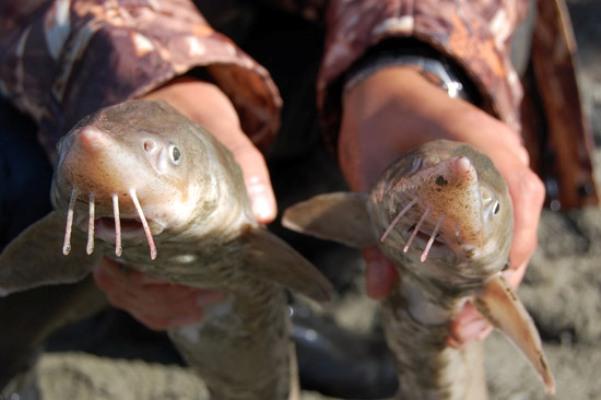
Where to catch sterlet
Well, of course, without knowing the promising fishing spots, you can’t count on a good catch of sterlet. But if you know the principles of finding good places for fishing for sterlet, then you can find a good place for yourself and regularly go there to catch sterlet.
Of course, it is quite difficult to clearly determine the place where sterlet fishing will be successful, and each angler keeps such places a secret from others. The fishing location will be influenced by both the time of year and the water level in the river. Now we will find out under what conditions where to look for sterlet.
First of all, when fishing for sterlet in an unfamiliar place, you must find a hole in the river. If you find a hole, you should find a way out of it. Set up your fishing spot just opposite this spot. Sterlet usually moves within a day from a hole to shallow water, but here you will have 2 in 1. When using several gears, you will be able to fish both promising areas at once, thereby increasing your chances of biting a sterlet.
If we talk about catching sterlet in spring or summer, then whether the sterlet is closer or further from the shore may depend on the water level in the river. When the river bed is overcrowded and the water level is high, the sterlet can come very close to the shore in search of worms and various larvae washed up from the shore soil. At such times, sterlet is sometimes caught even on a float fishing rod.
And on the contrary, when the water level in the river is low, the sterlet moves further from the shore and settles in holes, waiting until the water level rises and returns to its usual state.
In autumn, sterlet does not approach the shore even during high water and tries to stick to the holes all autumn. Only occasionally, as an exception, this fish can be found in September-October not far from the coast.
When the water level is normal or there is a decline, the sterlet usually stays at a distance of 50-100 meters from the shore, and during high water it approaches the shore by 25 or even 10 meters.
In search of food, sterlet often stops at the border between fast currents and standing water. In such places she can always find something to profit from, because larvae, insects or worms that escape from the current often settle here.
In areas without a current, you should not look for sterlet, because it never moves a significant distance from the water flow and if it approaches standing water, it stays exclusively at its border with the flow.
Sterlet usually comes out to the shallows in the mornings, and in the late afternoon returns to the pits. But when entering the shallows, the sterlet never approaches close to the shore, preferring shallows located no closer than 40 meters from the coastline, and optimally up to 100 meters.
It is very important to know that sterlet lives in flocks, so several specimens are often caught at once. If one sterlet bites, it is advisable to return the tackle to the same place as quickly as possible and carefully monitor other tackles. If a sterlet approaches them, a bite will definitely follow, because the sterlet willingly swallows any bait lying on the bottom suitable for catching it.
In which rivers are sterlet found?
Let's list the rivers in which you can certainly catch the desired sterlet, knowing the exact habitats.
- Ob - the most sterlet is in the Novosibirsk region in the Suzunsky district at the confluence of the Suzun River.
- Near the village of Pervomaiskoe, at the confluence of the Chulym River.
- Not far from Tomsk.
- There are not many in the area of the Novosibirsk dam, but there are some.
- Irtysh . Sterlet is caught here from the mouth to the confluence with the Ishim River. But the river has recently become very polluted, so there are significantly fewer sterlet.
- Don . There are many good places for catching sterlet in the Saratov region.
- Volga. In May, sterlet goes to spawn in the area from Rybinsk to Samara.
to the upper Volga in the Yaroslavl region with the beginning of lilac flowering. to the middle Volga when the apple trees bloom and descends to the lower reaches of the river only at the beginning of June.
- Oka . The sterlet population here is not high, but there are still good specimens, especially in the Ryazan region. During spawning, sterlet prefers to be in the riverbed. In summer it moves with the current and only downwards. In winter it lies at the bottom in holes.
- Vyatka . It is not the deepest river, and here sterlet fishing is periodically banned. In summer it is allowed to catch sterlet and even sport fishing is carried out in some areas. But knowing the deep-sea places, at the beginning of June the hot time for catching sterlet begins on Vyatka. Fishermen of the Kirov region often return with a large catch of sterlet.
Sterlet fishing area
This species is widespread in the rivers of the basins of such seas as the Black, Azov, Caspian, White, Barents and Kara. Distributed in large numbers in the Volga basin, mainly in the middle and lower reaches.
This species is widespread in the rivers of the basins of such seas as the Black, Azov, Caspian, White, Barents and Kara. Distributed in large numbers in the Volga basin, mainly in the middle and lower reaches.
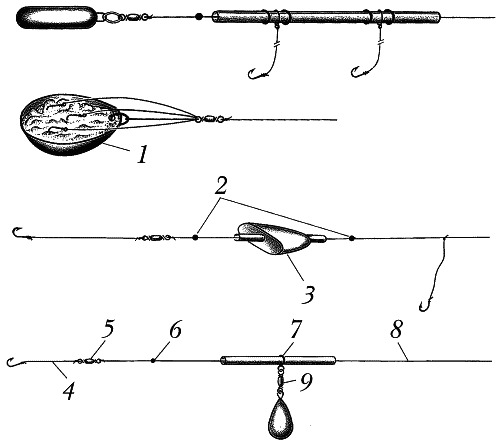
Most often, chechugum can be found in northern and middle latitudes. Sterlet is a marine fish, but it spawns, as a rule, in rivers that flow out (or flow in) from these seas. You can meet it in the following seas:
- Caspian Sea.
- Black Sea
- Sea of Azov
- Baltic Sea
- White Sea
Chickfish are also often found in rivers, as mentioned above. Sometimes they are also called “sterlet rivers”. Here are the main rivers where it is found, or at least occasionally, in places, it comes across:
- Volga
- Irtysh
- Ob
- Don
- Yenisei
- Oka
- Ural
- Vyatka
- Kuban
- Sura
- Dnieper
- Gum
- Angara
Below in the article we will look at catching this fish on some rivers, and various methods of such fishing.
The choice of location is decisive. A good place is worth a lot.
From year to year, fishermen go to the same places and most often return with a catch. These places occur both on the main river and on narrower through channels (sleeves), but always with a current.
Depending on the time of year and water level, the sterlet’s habitat and feeding habits change significantly. Good places are passed down by inheritance, sold, and there are even “wars” for some good places.
There is no specific and clear definition of where to catch sterlet on the river. Depending on certain conditions (water level, weather, time of day, etc.), sterlet can be caught in completely different places. On an unfamiliar body of water, it is most reliable to land at the end of the hole and, accordingly, at the beginning of a long shallow. Without leaving one place, you can fish both the pit and the exit from the pit and the shallows.
Sterlet changes its feeding places up to several times a day. Sterlet is one of those fish that can be caught around the clock. Since fishing for sterlet at night is prohibited, we will analyze fishing at another time. It must be said right away that even in the daytime (morning, afternoon, evening) you can fish almost no worse than at night. Although at night, the sterlet bite will be better.
In deep water, sterlet enters quiet-water coves, but it is impossible to catch it there with amateur gear. And although it enters places without a current, it always stays close to the current.
Therefore, here’s another tip: look for the mouths of streams or the boundary between current and standing water. It is precisely along the border of fast and stagnant water that the sterlet looks for food.
These places are especially relevant at the beginning of summer. Further towards the autumn, the sterlet more and more often goes to the pits, and in the fall it almost stays only on them.
If you fish in holes, then there are two options worth trying: fishing in holes close to the shore (sometimes the bite happens literally 10 meters from the shore) or directly in the hole. Most often during the day, the sterlet stays either in holes or walks along the fairway.
It is not difficult to determine the fairway - it can be seen by the location of the strongest flow of water on the river. When casting onto the fairway, use not only a heavy sinker, but also cast 10-20 meters further than the fairway. When the rig is lowered to the bottom and drifts slightly, the sinker will eventually land exactly on the fairway.
Sometimes, especially in the morning, sterlet comes out to feed on the shallows and there you can also catch it, but with the longest cast possible. In the shallows, sterlet usually does not come close to the shore, and its feeding areas begin at 50 meters, and more often at 70-100 meters.
There is another way to determine where the sterlet is feeding - visually or by ear. What does it mean? Often sterlet “melts” or makes “candles”.
Its splashes cannot be confused with any other fish. Firstly, these splashes occur quite far from the shore or on the fairway, and secondly, the sterlet does not “hoot” or beat its tail, but splashes.
Obviously, at high speed it rises vertically upward behind the floating food and jumps out of the water, and since its weight is small, it falls into the water with a sound similar to the sound of a small stick falling into the water.
As you can see, there are a lot of places to catch sterlet and you still need to look for a cool spot. Usually, local residents clearly know where it is best to look for sterlet at a certain water level. If you find yourself at a sterlet exit site, you can start getting bites literally in the very first minutes. There is no point in sitting in one place for more than an hour and waiting for a bite.
Three or four of us often came to catch sterlet and each of us had several catches. We began to place our battery at intervals of 50 meters and they occupied all possible places: the pit, the exit from the pit, the beginning of the sands (usually with a clay or muddy bottom) and the sands themselves. And from this string of gear it was clearly visible where the fish was currently holding.
Most often, sterlet was caught only in the hole in the early evening; closer to sunset, bites began at the exit from the hole, but early in the morning or at dawn it was well caught on the sands. We knew these features and therefore did not remove the baits from the sands, although there were no bites in the evening, but there was a sure expectation that they would be caught at night or in the morning.
Often I had to find myself in places with a lot of ruffs. Of course, they greatly interfere with fishing, but nothing can be done - you need to be patient and bring more bait with you. I can say one thing for sure: ruffes are the same fish as any other, and from time to time they also stop biting.
The sterlet bites very confidently. As a rule, this is a gradual and increasing pulling of the tackle. Having been caught and hooked, the sterlet makes sharp jerks, but quickly calms down. Sometimes, having been hooked in your absence, it calms down so much that you only notice the caught fish while pulling out the tackle.
And one last thing. The issuance of licenses for sterlet fishing is a rather fleeting matter. The number of licenses is limited, and some enterprising fishermen buy out the entire quota for sterlet fishing assigned to a certain area at once. So hurry up and worry about the license in advance.
Konstantin Fadeev
Methods of catching sterlet
Current methods of catching sterlet in open water. We do not consider seine tackle, because it is classified as poaching gear.
Rosrybolovstvo is considering lifting the ban on sterlet fishing in the Volga-Caspian basin and, accordingly, stopping the imposition of fines.
- In certain areas (reserves, fish farms, fish hatcheries).
- During spawning.
- Fishing with a net.
- Airplane fishing.
- On the move.
The fine for 1 caught sterlet is 4,572 rubles. Images are attached below.
Basic donka
When catching sterlet on bottom gear , be sure to consider the following details; If you are a beginner and do not know the features of a particular area, then you should not use two leashes when rigging. Hook only one, otherwise, if the bottom is covered in snags, you will get caught when fishing for fish, the leash will break, and the sterlet will come off, which is very bad. Usually the sterlet manifests itself very quickly; if there is a school at the casting point, then 15 minutes is enough for the fish to start biting. If much more time has passed, then hurry to change place.
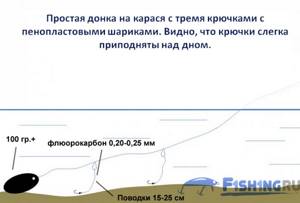
Anglers who fish in a well-known area can safely attach two leashes , but it’s definitely not worth it anymore - sterlet is a bottom-dwelling fish, there’s no point. The size of leashes needed is from 15 to 25 cm long and 0.20-0.25 mm thick . Choose the highest quality fishing line for leashes to avoid breakage, and also, cheap fishing line is prone to twisting, which will interfere with normal fishing. The optimal fishing line length is 150-200 meters. The feeder also performed well for carp fishing.
Ryobi Ecusima with size 3000 is suitable for catching small sterlet weighing up to 1.5 kg
When choosing a reel, pay attention to its free movement - this will make it easier to fish for sterlet. The fish do not particularly resist, especially the females after spawning, which makes fishing in the summer easy and enjoyable, because the bite at this time is observed around the clock. The reel size should be 3000-4000 for medium-sized sterlet.
fishing rod that is convenient for you, the main thing is that it is durable. The length is enough up to 2.5 m if you fish from a boat. When fishing from the shore, it will be more convenient to fish with a 4-6 meter rod. The position after casting will be correct in case of strong currents if you position the feeder vertically; In still water, keep it parallel to the shore.

The sinker must be heavy, at least 100 g , and sink instantly and hold the tackle in the current.
During a flood, sterlet usually stands in quiet backwaters and likes to feed near the border of fast currents and quiet water. This applies to the summer period. With the arrival of autumn, the sterlet begins to hide in deep-sea holes, moving away from the shores, so it prepares for wintering.
As a rule, during the day the sterlet likes to swim along the fairway, so when casting, take into account that the load flies about 20 meters.
Video on making bottom gear (tackle):
Tackle elastic band
Catching sterlet with an elastic band is very convenient if you plan to fish in one place for more than one day, and also if the bottom is smooth and clean. This method is simpler than fishing with a donk, because you don’t have to constantly get the gear out. You are allowed to attach no more than 5 hooks to an elastic band, but this is quite enough; you can pull out several sterlets at once.
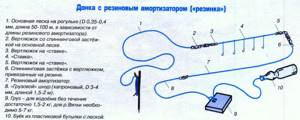
The first version of the donkey with an elastic band
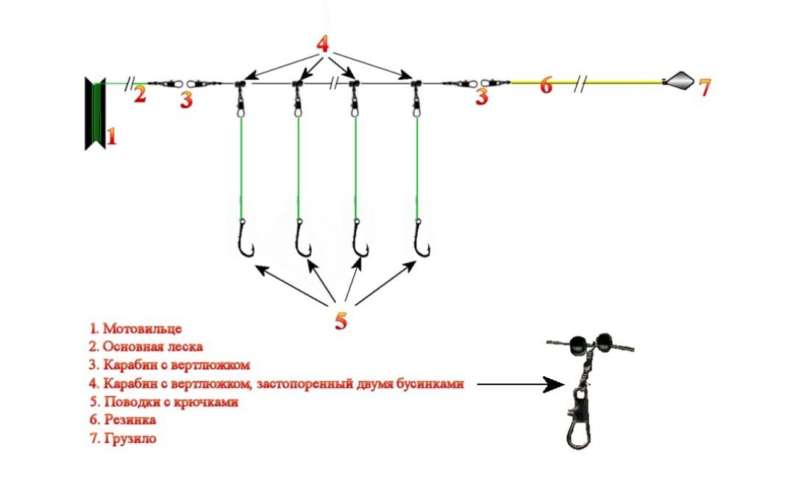
Second option with 4 leashes
For a five-meter fishing line you need 1 meter of elastic - this is how we calculate the tension coefficient. Take leashes for elastic bands from fluorocarbon measuring 0.2-0.23 and 15-25 cm . The load will show itself better in a wide shape, for example, in the form of a spoon or any geometric figure; it should lie flat on the bottom and not be carried away by the current. Weighing no more than 200 grams . and 15 cm . in diameter.
A complete article on making your own elastic bands.
How to choose hooks
When fishing with a donk, use a hook with a long shank No. 6; such a hook is more convenient to remove from a long mouth and you can place a large bait on the tip. If you prefer to fish with an elastic band, stock up on enough hooks, they get dull very quickly on the rocky bottom; or better yet, take a special sharpener for sharpening the hook - this will protect you from unwanted fish falling off the hook.
Hooks must be of high quality (take trusted companies, don’t skimp), it’s good if they unbend when hooked. If you take cheap ones, you will end up not doing sterlet fishing, but endlessly replacing gear. Opt for hooks without a beard, then you will be able to painlessly release the sturgeon back into the river if it turns out to be small.
Installation of fishing gear
The donkey rig for sterlet can be the simplest and includes:
- reel - choose a high-quality model with a size of 3000-4000;
- strong fishing line with a diameter of 0.3 mm - often preference is given to monofilament fishing line due to its less visibility, which is important when catching cautious fish;
- sharp hooks in the range No. 5-7 according to the domestic classification;
- heavy (50-100 g) flat sinker - its weight depends on the strength of the current, and a flat shape is preferable so as not to get stuck at the bottom among the stones.
Read more
How to catch pike in spring on small rivers?
When installing the tackle, the leashes are tied higher from the sinker at a distance of up to 50 cm. Their recommended length is about 15-20 cm, and the thickness should be less than the main line - 0.2-0.25 mm. For leashes, you need to take the highest quality fishing line, but it is better to use fluorocarbon; due to its greater rigidity, it twists less in the current.
All equipment must be mounted taking into account the inevitable frequent snags, so it is worth reducing the number of losses by using expandable winding rings and hooks that extend when snagged.
What to use as bait
Although sterlet is not picky about food, it prefers live bait:
- Worm mounting options
Large worms;
- Insect larvae;
- Mayflies;
- Shrimp, crustaceans;
- Large fry (it should be mounted with a “stocking” or “ring”).
Sterlets are good at biting on pieces of spoiled fish and its entrails. The catch rate will increase if you add garlic to the main bait, because sterlet is very attracted to strong odors.
You can use artificial bait, but there is a prerequisite here - the bait should not be hard, otherwise do not count on any catch. Soft silicone nozzles with imitation of fish caviar have proven themselves to be excellent. And to enhance the effect, treat them with a special flavor; and choose these baits in red colors.
Bait for sterlet
Experienced fishermen who have caught sturgeon more than once claim that worms are the best bait.
- It is better to combine maggots or bloodworms with a worm;
- crawls;
- a fry can take a fairly large specimen;
- It is better to take pieces of fish that are slightly spoiled or provide them with a strong garlic smell;
- crustaceans;
- silicone imitation fish roe;
- other soft baits;
- bait should have a pronounced odor;
- The basis of the bait is cake or oatmeal feed;
- Bark beetle larvae can be added as a protein base.
It doesn't matter which worm you use as bait. Fish react equally well to earthworms and dungworms. The only condition is the method of planting. The most effective method would be to pierce the body of the worm in several places, less so with a “toe”.
Sterlet has very good taste. Its meat is very tasty and healthy. In addition, preparing it is very simple. And caviar costs a lot of money. The combination of these qualities makes the sturgeon species desirable to catch.
Unfortunately, unscrupulous fishermen and poachers have brought this species to the brink of extinction. For the sake of obtaining black caviar, the fish population is destroyed. The fish carcasses themselves are sometimes simply thrown into the water. Only valuable “black pearls” are confiscated. Therefore, catching sterlet on donka is currently not possible for the population of most regions of Russia.
When choosing bait, you should rely on the following criteria:
- Earthworms, maggots, dung worms, bloodworms, and small butterflies are used as bait.
- It is advisable to use large and medium worms. When placing the worm on the hook, the worm should be pierced in several places, this will ensure good retention of the bait on the hook.
- When preparing bait, you should take into account that sterlet bites on bait of an animal species.
- You can also use fish fry, but in this case other types of fish - pike, perch, pike perch - can also actively peck.
- Sometimes animal bait is combined with vegetation. It is important that this bait has a pungent odor; a suitable option is the smell of garlic and missing fish. It is advisable to throw it closer to the bottom.
- It is not advisable to use hard bait. The fish may mistake it for a stone and simply spit it out.
Experienced fishermen know that sterlet is quite unpretentious in choosing bait. Fish prefer live bait. You can use a dung worm or an earthworm.
A large or medium-sized worm is best suited for bait. In order for this bait to hold firmly enough on the hook, it is pierced in several places at once.
The fish also readily reacts to crustaceans, maggots and other larvae.
Various combinations of baits have also proven their effectiveness. For example, a bait consisting of three parts - an earthworm and two maggots. Some combinations are focused on achieving a strong odor.
You can use pieces of decomposing fish or garlic this way. The most suitable place for this bait is at the bottom of the reservoir. Sterlet, although not a predatory fish, still bites on fry. One of the advantages of this bait is the possibility of catching both sterlet and pike.
Another type of bait is silicone, which usually replaces fish eggs. To more effectively imitate blende, it is necessary to use the caviar smell and the red color of the silicone itself. Monofilament fishing line is best suited for this type of bait so as not to spook the prey.
It is worth trying various soft products in the form of bait. Since the sterlet has a huge mouth opening, bulky objects are best suited. It is very important that they are as soft as possible, otherwise the fish will mistake the bait for a stone and will not swallow it.
The standard Siberian bait is a worm. Not necessarily big, I fish with both earthen and dung ones. I prefer medium-sized worms. I dress them entirely, but not with stockings, but pierce them in several places. This keeps the worm tighter on the hook. The sterlet feeds almost like a carp; most often it swims near the bottom and sucks up food from below with its mouth.
The sterlet's mouth is large and even very large pieces can fit into it. Sterlet is often caught using large crawling worms, pieces of fish or offal. Lately, sometimes, following the example of winter fishermen, I also bait a couple of maggots in addition to the worm. They perfectly hold the worm on the hook.
I also know that sterlet is caught quite well on the tiniest fry, no larger than the little finger. Moreover, along the way, and sometimes vice versa, you come across perch and even pike perch. Such a fry is baited entirely on a hook, following the example of a worm. You can replace the fry with a small piece of fish. Sterlet is not a very selective fish and, like a vacuum cleaner, collects everything during feeding.
Sometimes a pike will also be caught on the fry; I managed to pull out the pike twice; in other cases, they either came off the hook or bit off the leash. Once a pike even coveted the sinker, and I dragged it almost to the shore, but two meters from land it spat out the sinker and “such a cheat was it.” Attempts to catch it immediately with a spoon were unsuccessful.
In general, the sterlet for the most part feeds on various insect larvae, which it collects either at the bottom or on underwater snags, or with its long nose it “plows” the bottom soil and extracts larvae from there.
In June-July, the sterlet “melts”. This is the name for the rise of a sterlet in the surface of the water for insects and other food.
The sterlet rises upward with its belly (since its mouth is at the bottom of its body and captures insects). Often such a rise ends with a “candle”; the sterlet jumps out of the water to a height of 30-40 cm.
If you were distracted while fishing and suddenly heard a characteristic splash in the area where your gear was located (similar to the sound of a stick falling into the water), then with a high degree of probability the sterlet got caught on your donkey and, trying to unhook, rose right up to the surface.
Of course, this happens at shallow depths, since a sterlet cannot lift a load from a depth of 5-6 meters. Large pans are capable of lifting virtually any tackle.
